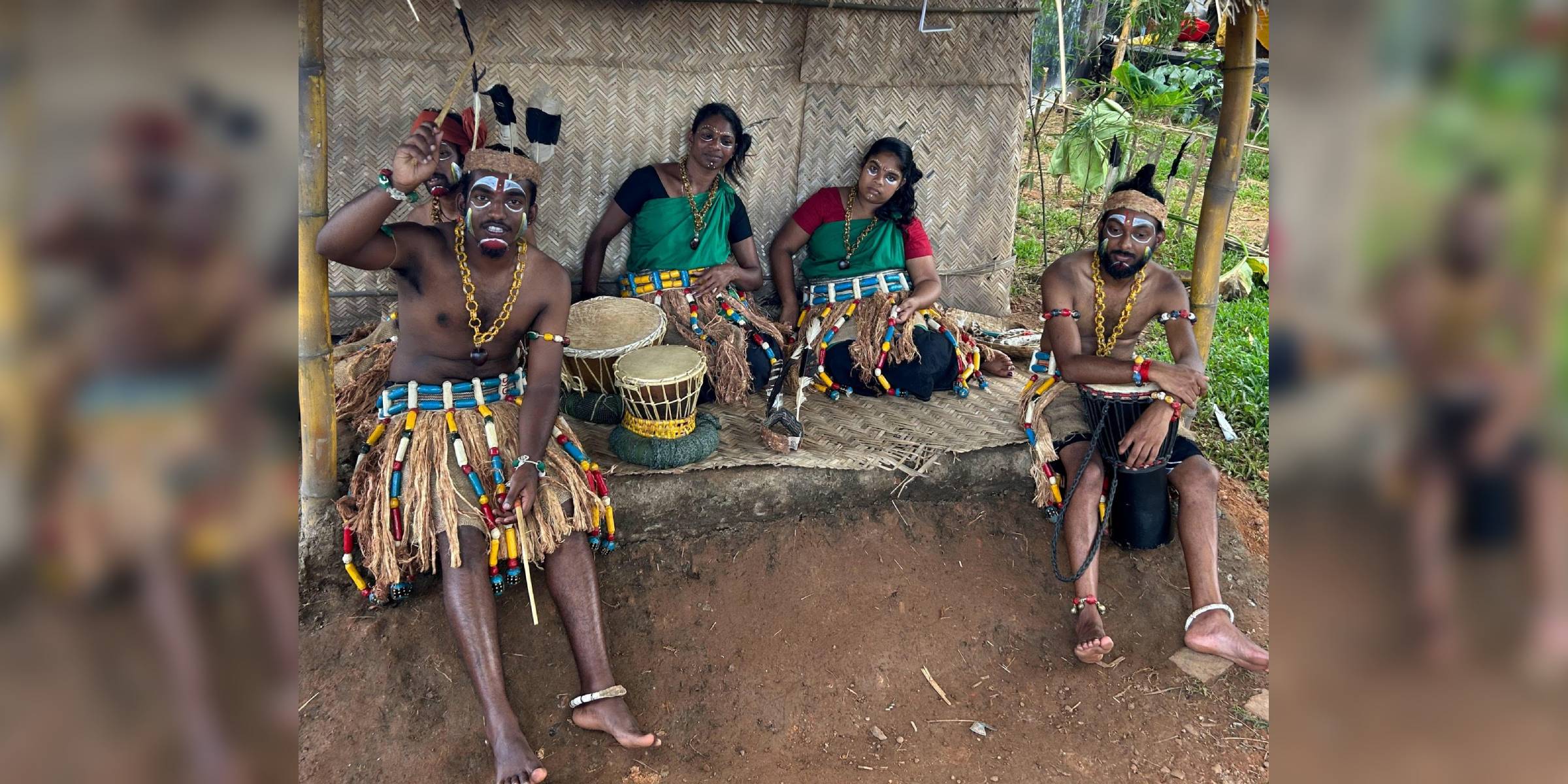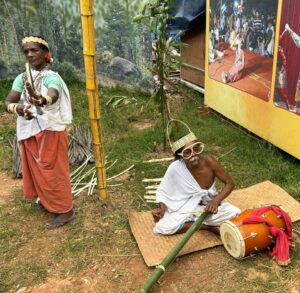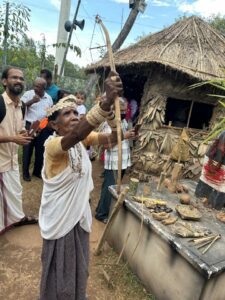Many people have taken umbrage to the concept of the "living museum", equating it with colonial Europe's infamous human zoos.

The Paliyar tribals at the "living museum" in Thiruvananthapuram, Kerala. (K A Shaji/South First)
At the height of colonial rule, European society had a fondness for human zoos, which included “exotic” human specimens from the colonies. Aboriginals from Africa, South America, and Asia would be acquired from the colonies and displayed for the public’s amusement and delectation in Paris, London, and Berlin.
Many in colonial Europe regarded these humans as creatures to be subjugated and enslaved. They were eager to view “human-looking slave species” brought from Africa and other faraway places.

Oorali tribals at the living museum Photo: K A Shaji
In many such zoos, the imprisoned humans were compelled to perform peculiar cultural performances or religious rituals in front of the colonial masters.
The last human zoo in Europe was closed in Brussels, Belgium, in 1958, around the same time a democratically-elected Communist government took power in distant Kerala.
Six-and-a-half decades down the line, Kerala’s Left Democratic Front (LDF) government is facing allegations of running something like a human zoo — probably the country’s first — albeit for a limited period of seven days.
It is in the state capital Thiruvananthapuram as part of its much-publicised Keraleeyam celebrations, which mark the anniversary of the state’s formation.
The Kerala Folklore Academy, a branch of the state’s Department of Culture, has established an ethnic tribal village near Kanakakunnu Palace, one of the feudalistic remnants bequeathed from the former princely kingdom of Travancore. The academy calls it a “living museum”.
Chief Minister Pinarayi Vijayan inaugurated the tribal village on the palace grounds in the presence of Cultural Affairs Minister Saji Cheriyan.
Men and women from the state’s five numerically weak tribal communities have been brought to this artificial tribal hamlet and are being paraded in front of their respective communities’ houses.
Some were told to prepare rice from the grains in the traditional method, while others were told to make rice gruel the tribal way.
Some displayed their bows and arrows, while others sang and danced tribal tunes.
They were also encouraged to take selfies with the tourists during interviews.
It was startling to see tribal teenagers dressed in their traditional garb and acting like museum pieces in front of the city’s inhabitants, who approached them with curiosity and joy.
Visitors were urged to enter the huts and familiarise themselves with the cooking utensils and farming tools.
Apart from all of their expenses being taken care of, the participating tribals have also been promised a wage of ₹1,000 per person each day.
Photographs of college students taking selfies with tribals dressed in traditional attire have been circulated on social media, eliciting criticism from tribal leaders, researchers, and opinion-makers.
The Kerala Folklore Academy’s move has sparked a social discussion, with numerous tribal groups strongly opposing it.
Many have compared Kerala’s rulers to colonial European conquerors of the Third World because of the unusual mindset that gave rise to the tribal “museum pieces”.
Some of the photos from the “Kanakakunnu tribal village” resembled those from the old Malayalam comedy film Bamboo Boys, in which director Ali Akbar presented them as a laughingstock with the use of ludicrous costumes and indiscriminate use of bows and arrows.
Several indigenous youngsters on display at Kanakakunnu had their bodies painted in various colours and designs.

An Oorali tribal woman uses her traditional bow and arrow in the temporary tribal village. Photo: K A Shaji
According to the Folklore Academy, the Kani tribals of Thiruvananthapuram, the Mannan, Oorali, and Paliyar tribals of Idukki, and the Mavilan tribals of Kasaragod had representation in the “living museum”.
The academy strongly refuted the claim that it was a human zoo, saying that it was the country’s first living tribal museum, where traditional art, music, and dances have been introduced to the general public — mostly the young generation.
According to the academy’s administrators, they attempted cultural bonding rather than a cultural divide.
M Geethanandan, leader of the Adivasi Gothra Maha Sabha, denounced the experiment and demanded that it be halted immediately.
Meanwhile, tribal activist Dhanya Raman posted on Facebook that Kerala’s SC/ST Minister K Radhakrishnan told her that a tribal living museum was a concept to which he never subscribed.
However, the tribal village will stay open until the evening of Tuesday, 7 November, when Keraleeyam concludes.

May 17, 2024

May 17, 2024

May 17, 2024

May 16, 2024

May 16, 2024

May 16, 2024